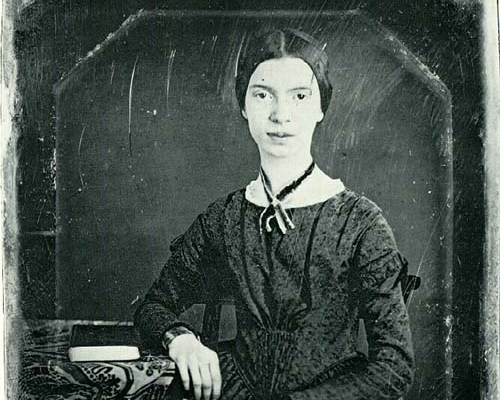‘It was not Death, for I stood up’ is a poem by Emily Dickinson where she talks about hopelessness and depression. She gives the reader a glimpse into the state of her mind with the help of powerful images. Emily Elizabeth Dickinson was an American poet. Dickinson was born in Amherst, Massachusetts. Although part of a prominent family with strong ties to its community, Dickinson lived much of her life in reclusive isolation.
Brief Summary of ‘It was not Death, for I Stood Up’
In the first stanza, Dickinson tries to identify the exact nature of her condition, by the process of elimination. It could not have been death, she says, because she was able to stand up. It could not have been night since she could hear the church bells which rang at noon.
Dickinson continues into the next stanza in the same vein. Siroccos refers to a hot and dry wind blowing from North Africa across the Mediterranean to Southern Europe. Dickinson eliminates the possibility of frost since she could feel warmth over her body. But it wasn’t the heat of a fire since her feet were cold enough to cool a chancel (the part of a church near the altar, reserved for the clergy and choir)
The poet states in the next line that her condition had all the features that she had counted out in the first two stanzas. Her condition reminded her of a corpse lined up for burial. The poet felt that her life has been shaved of all joy and happiness and stuck inside a metaphorical coffin. She felt suffocated as if she was locked inside the coffin. It was like midnight, when most human activities cease. It was as if the life force within her had stopped. She felt like she was in the middle of empty space.
The beating ground refers to the soil from where many forms of life originate. Frosts and autumns brings with them a temporary cessation of such life. Hence they appear to be repealing the beating ground.
The poet’s mind is in chaos. She feels unable to get the thoughts in order. Spar refers to the thick, strong pole such as is used for a mast or yard on a ship. She sees no possibility of her condition improving and no spar to stabilize herself with. Her hopelessness is so complete that she has become completely numb. Because she is unable to even see the hint of a better future, she cannot even find a reason to despair, and accepts her condition as it is.
Analysis of ‘It was not Death, for I Stood Up’
During her life, Emily Dickinson was no stranger to loss. Many of her poems try to explore the nature of death. She was selective about the company she kept and was often considered a recluse. In her own company, she had a lot of time to reflect on the human condition.
This poem offers a glimpse of the chaos she felt within. The poem offers hints of a mind filled with depression and hopelessness.
In the first 2 stanzas, the poet shares a series of potent images. We get to see a mind stuck in contradictions. She felt like a corpse, yet knew that she wasn’t as she could stand up. She felt like it was night –an obvious hint to the state of her mind-yet knew that it was noon. Her flesh was freezing, yet she felt a warm breeze (‘Siroccos’ has been used in a generic sense to refer to a warm breeze, since the siroccos does not blow across North America). She felt as if she was burning but her feet felt like cold marble. Dickinson states that she felt a mixture of such feelings, hinting at the chaotic state of her mind.
She paints a morbid image of corpses lined up for burial and states that they reminded her of herself. She feels shriveled within, as if all the joys had been sucked out of her life. She feels ‘shaven’ and ‘fitted to a frame’. By ‘fitted to a frame’ she could be referring to the feeling of being put inside a coffin. She feels suffocated inside this metaphorical coffin, without a key.
She then compares her condition to midnight, when most of the daytime human activities have ceased and there is a feeling that the ticking of life has ceased. She feels lifeless and lost in space. She tries to give the readers another way of looking at her condition. The ground is like a beating heart which give rise to trees. During autumn, the trees start shedding their leaves and during frost there is little or no growth in trees. It is as if frost and autumn try to repel the life force of the soil. Emily Dickinson feels that her condition is like the frost and the autumn morning, trying to repel her desire to go on.
In the last stanza, however, the poet offers us a comparison which she feels is the most apt.
Her condition is like chaos. It is unstopping and dispassionate. It offers her no chance of stability. It does not allow her to even properly identify her condition so that she can actually begin to understand her problem. The last two lines are very moving and are the cry of a helpless soul. The poet is in a sea of confusion. She sees no possibility of any nearby land. Since she sees no possibility of hope, she feels numb within and is unable to ‘justify despair’. Hope you enjoyed going through the summary and analysis of ‘It was not Death, for I Stood Up”.
Some online learning platforms provide certifications, while others are designed to simply grow your skills in your personal and professional life. Including Masterclass and Coursera, here are our recommendations for the best online learning platforms you can sign up for today.
The 7 Best Online Learning Platforms of 2022
- Best Overall: Coursera
- Best for Niche Topics: Udemy
- Best for Creative Fields: Skillshare
- Best for Celebrity Lessons: MasterClass
- Best for STEM: EdX
- Best for Career Building: Udacity
- Best for Data Learning: Pluralsight















